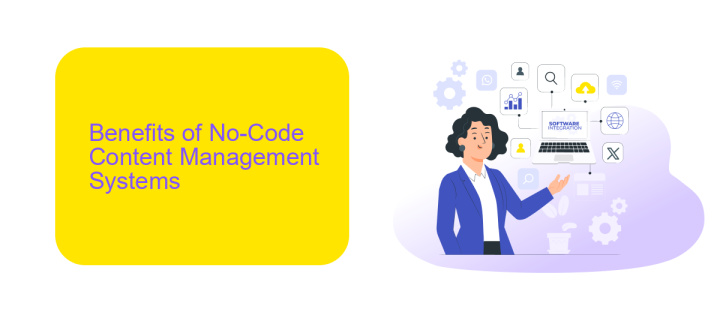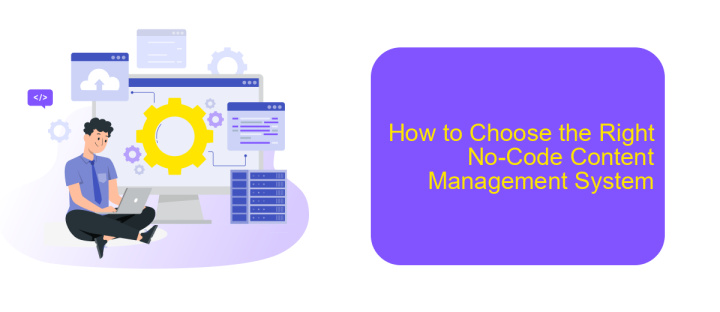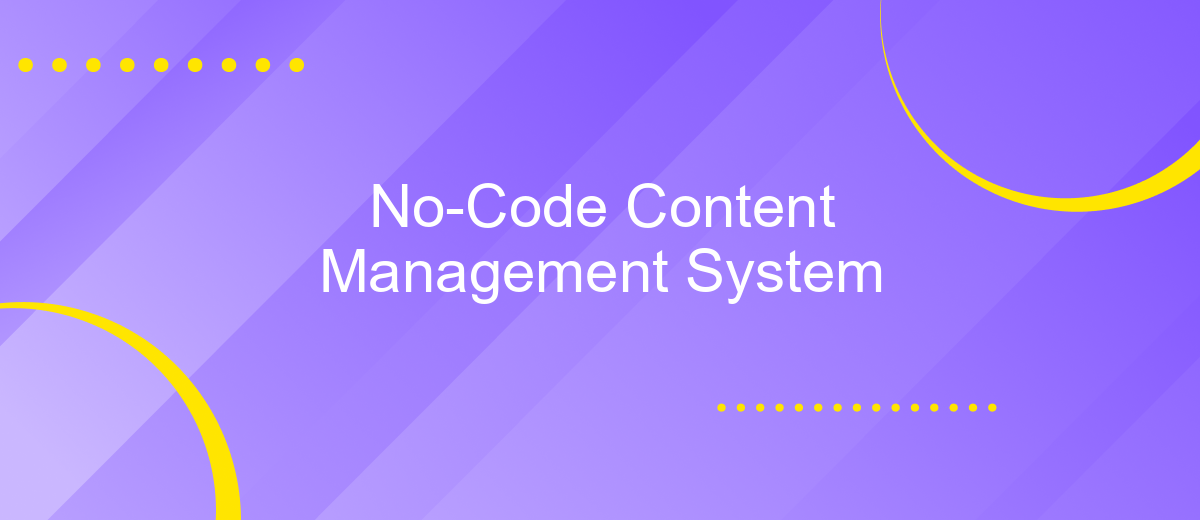No-Code Content Management System
In today's fast-paced digital landscape, No-Code Content Management Systems (CMS) are revolutionizing the way businesses and individuals manage their online presence. These innovative platforms empower users to create, edit, and publish content without the need for extensive technical knowledge or coding skills. By streamlining content management, No-Code CMS solutions are making it easier than ever to build and maintain dynamic websites.
Introduction to No-Code Content Management Systems
No-Code Content Management Systems (CMS) have revolutionized the way businesses and individuals manage their online content. These platforms enable users without programming skills to create, edit, and publish content effortlessly. By eliminating the need for coding, no-code CMS tools democratize the web development process, making it accessible to a broader audience.
- Ease of Use: Intuitive drag-and-drop interfaces that simplify content creation.
- Cost-Effective: Reduces the need for hiring developers, saving both time and money.
- Flexibility: Allows for quick updates and changes without technical expertise.
- Integration Capabilities: Seamlessly connect with other tools and services.
One of the key features of no-code CMS platforms is their ability to integrate with various third-party services. For instance, ApiX-Drive offers a robust solution for automating integrations, enabling users to connect their CMS with other applications like CRM systems, email marketing tools, and social media platforms. This enhances the overall functionality and efficiency of the content management process, allowing users to focus more on creating quality content rather than managing technical details.
Benefits of No-Code Content Management Systems

No-code content management systems (CMS) offer numerous benefits, making them an attractive choice for businesses and individuals alike. One of the primary advantages is the ease of use; these platforms are designed to be user-friendly, allowing non-technical users to create, manage, and update content without needing any coding knowledge. This significantly reduces the time and cost associated with hiring developers or learning complex programming languages. Additionally, no-code CMS solutions often come with intuitive drag-and-drop interfaces, customizable templates, and pre-built modules, making content creation a seamless process.
Another significant benefit is the ability to quickly integrate various tools and services to enhance functionality. For instance, integrating with platforms like ApiX-Drive allows users to automate workflows and connect their CMS with other applications effortlessly. This can include syncing data between the CMS and CRM systems, automating email marketing campaigns, or connecting with social media platforms, thereby streamlining operations and improving efficiency. Overall, no-code CMS platforms empower users to take full control of their digital presence, ensuring that their websites and applications are always up-to-date and optimized for performance.
Use Cases for No-Code Content Management Systems

No-Code Content Management Systems (CMS) are revolutionizing the way businesses manage their online content. These platforms enable users to create, edit, and publish content without any coding knowledge, making them accessible to a broader audience. They are especially useful for small to medium-sized businesses, startups, and non-technical teams.
- Small Business Websites: No-Code CMS platforms allow small business owners to quickly set up and manage their websites, saving both time and money.
- Internal Company Blogs: Teams can easily maintain internal blogs for communication and knowledge sharing without needing a dedicated IT team.
- E-commerce Stores: Entrepreneurs can create and manage online stores, handling product listings, payments, and customer interactions seamlessly.
- Marketing Campaigns: Marketing teams can launch landing pages and promotional sites rapidly to support various campaigns.
- Integration with Other Tools: Using services like ApiX-Drive, businesses can automate workflows by integrating their No-Code CMS with other applications, enhancing productivity.
Overall, No-Code CMS platforms empower users to take control of their digital presence without the need for extensive technical skills. They offer flexibility, ease of use, and the ability to quickly adapt to changing business needs, making them an invaluable tool in the modern digital landscape.
How to Choose the Right No-Code Content Management System

Choosing the right no-code content management system (CMS) can be a daunting task given the plethora of options available. Start by identifying your specific needs and goals. Consider the type of content you plan to manage, your team's technical expertise, and the scalability of the platform.
Next, evaluate the user interface and ease of use. A no-code CMS should be intuitive, allowing users to create and manage content without extensive training. Look for platforms that offer drag-and-drop functionality and customizable templates.
- Integration capabilities: Ensure the CMS can integrate with other tools you use, such as ApiX-Drive for seamless data transfer.
- Security features: Check for robust security measures to protect your content.
- Customer support: Reliable support can be crucial, especially if you encounter issues.
- Cost: Compare pricing plans to find one that fits your budget.
Finally, take advantage of free trials or demos to test the CMS before committing. This hands-on experience will give you a better understanding of how the system works and whether it meets your requirements.
- Automate the work of an online store or landing
- Empower through integration
- Don't spend money on programmers and integrators
- Save time by automating routine tasks
Conclusion
The advent of No-Code Content Management Systems (CMS) has significantly transformed the digital landscape, enabling users with little to no technical expertise to create, manage, and optimize their online content. These platforms democratize web development, making it accessible to a broader audience and fostering innovation by eliminating traditional barriers to entry. By leveraging intuitive interfaces and drag-and-drop functionalities, No-Code CMS solutions empower businesses to rapidly deploy and update their websites, enhancing agility and responsiveness in a competitive market.
Moreover, the seamless integration capabilities offered by services like ApiX-Drive further extend the functionality of No-Code CMS platforms. ApiX-Drive allows users to effortlessly connect their CMS with various third-party applications, automating workflows and ensuring a cohesive digital ecosystem. This not only streamlines content management processes but also enables more sophisticated and dynamic website functionalities without the need for extensive coding knowledge. In essence, No-Code CMS platforms, bolstered by powerful integration tools, are revolutionizing how businesses approach digital content creation and management, paving the way for a more inclusive and innovative web development environment.
FAQ
What is a No-Code Content Management System (CMS)?
How does a No-Code CMS differ from traditional CMS platforms?
Can I integrate a No-Code CMS with other tools and applications?
Is a No-Code CMS secure?
What are the limitations of using a No-Code CMS?
Time is the most valuable resource in today's business realities. By eliminating the routine from work processes, you will get more opportunities to implement the most daring plans and ideas. Choose – you can continue to waste time, money and nerves on inefficient solutions, or you can use ApiX-Drive, automating work processes and achieving results with minimal investment of money, effort and human resources.


